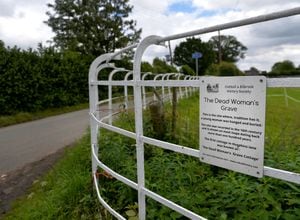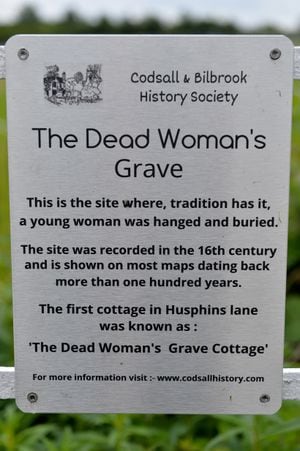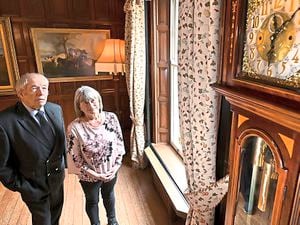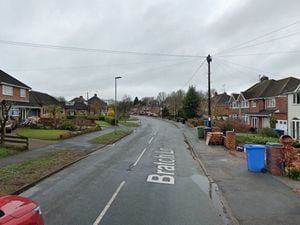Intrigue lives on over Dead Woman’s Grave
It is a story that has gone down into legend in a quiet part of South Staffordshire.

And now members of a local history society have taken it upon themselves to ensure the mystery of the Dead Woman's Grave is not forgotten.
A spot where a large stone stands at the border of Staffordshire and Shropshire purportedly marks the area where a woman was hanged and buried around the 16th century.
The unfortunate woman and her fate - or if she even existed at all - have provoked intrigue among locals for hundreds of years.
Suggestions over the woman's death include being executed for stealing apples, that she was a vagrant and locals didn't know where she was from and that she committed suicide and therefore could not be buried at the church.
Records of the Dead Woman's Grave date back 500 years.

And, keen for the tale not to be forgotten, the Codsall and Bilbrook History Society have now put up a sign where Husphins Lane meets County Lane in Codsall Wood.
It reads: "This is the site where, tradition has it, a young woman was hanged and buried.
"The site was recorded in the 16th century and is shown on most maps dating back more than 100 years.
"The first cottage in Husphins Lane was known as: The Dead Woman's Grave Cottage."
Judy Davies, from the local history society, said: "Who was this poor woman? Why was she buried at this corner? There are stories, but no evidence.
"We do not have the answers, but we do know that nearby were cottage called Dead Woman’s Grave Cottages. In 1676 a baby from there was baptised in St Nicholas Church, Codsall.
"Over the next couple of hundred years the name was in common use and appears on local maps. In 1885 there is reference to a farmer living at Dead Woman’s Grave.
"Anxious to make sure the name is not forgotten the local history society have erected a sign on the fence above the stone to record this unusual burial site."





